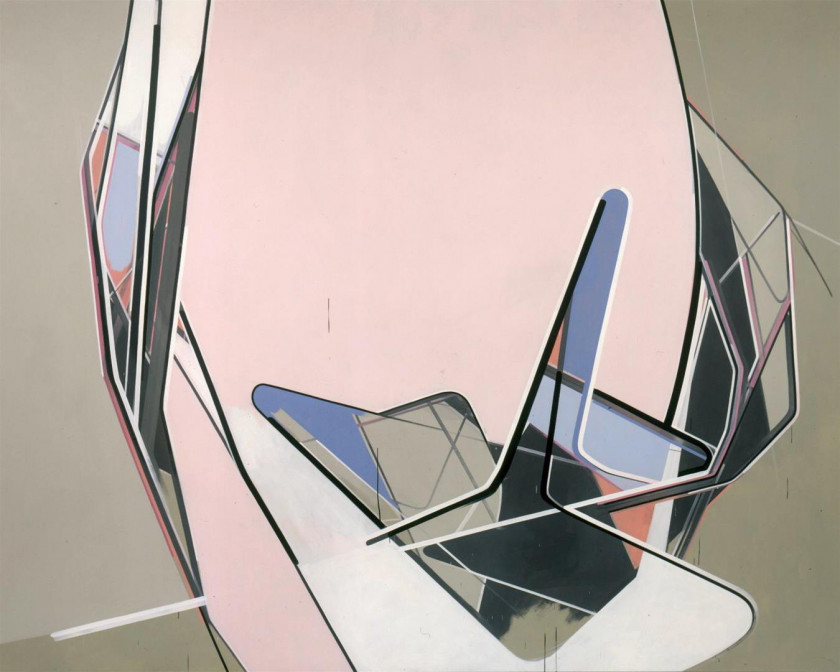RHB-07-2002
painting


2002
Oil on canvas
280 x 350 cm
Frank Nitsche (Germany, 1964) is a leading representative of German postmodern abstraction. Tied to the Dresden school of painting, his works are inspired by an imaginary archive of images, the translation and the appropriation of which becomes the point of departure for the artist's practice. Some images reach the canvas by choice, others by chance. Their bearing varies and transforms over time. What enters the canvas at one point classified as highly relevant might, in a split second, be painted over or disappear entirely under multiple layers of paint – under fragments of other images, the hierarchy and relevance of which are in continuous flux.
Part of a series of works initiated in 2002, for which deformation of architectural elements becomes characteristic, the work emphasizes its flatness, blurring the Euclidian space by a conjunction of heterogeneous perspectives. RHB – 07 – 2002, 2002, like most of Nitche's paintings, is pervaded by a conflict between geometrical exactitude and the painterly process's spontaneity. Executed without prior drawing or sketch, the painting results from a lengthy process of spontaneous outbursts interlocked with periods of suspension. Despite the immediacy of the painterly approach, however, the final form, reminiscent of a complex technical drawing, is hermetic, creating tension between the painterly process and the work's final form. Defined by structural lines, intersections, and intervals, the painting on hand ties its roots firmly with abstraction. The semi-figural composition reminiscent of a face and its synthetic appearance, however, creates a heightened sense of ambiguity, offering a vast array of reading that spans from Russian Constructivism to a cartoon-like aesthetic, creating through this multiplicity a silent commentary on the politics of contemporary image production and consumption.
Markéta Condeixa